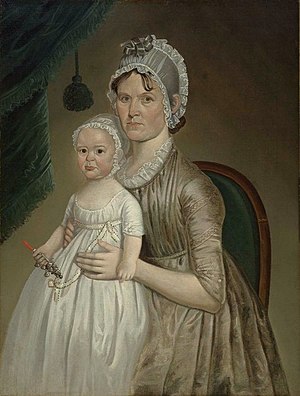This article has multiple issues. Please help improve it or discuss these issues on the talk page. (Learn how and when to remove these messages)
|
William Jennys (1774–1859), also known as J. William Jennys, was an American primitive portrait painter who was active from about 1790 to 1810. He traveled throughout New England seeking commissions in rural areas and small towns. He was the son of the self-taught itinerant portrait painter Richard Jennys (1735–1809), who was trained by and traveled with his father from about 1792 to 1808

His early works are characterized by broadly modeled faces with a minimum of costume detail and bare backgrounds. Both the costumes and backgrounds became more detailed as his career progressed. The Connecticut Historical Society (Hartford, Connecticut), Currier Museum of Art (Manchester, New Hampshire), the Farnsworth Art Museum (Rockland, Maine), the Lyman Allyn Art Museum (New London, Connecticut), the Honolulu Museum of Art, the Metropolitan Museum of Art (New York City), the Minneapolis Institute of Arts, the Museum of Fine Arts, Boston, the National Gallery of Art (Washington D.C.), the Rockefeller Folk Art Collection (Colonial Williamsburg) the Utah Museum of Fine Arts (Salt Lake City), the Museum of Arts and Sciences (Daytona Beach) and Wake Forest University Fine Arts Gallery (Winston-Salem, North Carolina), are among the public collections holding work by William Jennys.
References
edit- Chotner, Deborah, American Naive Paintings, Washington, National Gallery of Art, 1992.
External links
editGallery
edit-
Portrait of Mrs. Cooke by William Jennys, oil on panel, Honolulu Museum of Art
-
Portrait of Col. Benjamin Simonds by William Jennys